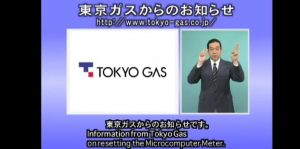Typhoon Preparedness – Sonya Underdahl

Some basic preparation ideas we can make before the storm:
1. Recharge your phone batteries, extra batteries, and fill your chargers
2. Keep water in buckets both for drinking and for flushing the toilet. If you have a bath you fill it with water.
3. If you have a window nearby make sure you have something you can put up in case it breaks for example a mattress
4. Cook additional rice or have non cook food in case we lose electricity or gas so you have enough supplies for the week. Know where to turn off your gas or electricity
5. Some people put sticky tape crosses, or use laminate seals on their windows. It doesn’t stop the glass breaking but it stops shards flying off in little pieces
6. Google and know where your nearest evacuation Center is
7. Keep a evacuation bag with your passport, first aid kit, medications, and important documents or jewelry ready with some warm clothes just in case
8. Ensure your exits are clear and things that can fly around outside are secured or brought inside. Anything left outside is a potential projectile.
9. Ensure your torches have fresh batteries.
10. If you need to evacuate, use this site to list: i. where you are ii. how many people so that others in the community may be able to offer to provide shelter for you. The community centres are not great.
12. Keep an eye on your friends and coworkers. This may seem extreme but you don’t want anyone to suffer unnecessarily.
13. If you have pets, ensure there is enough food for them for a week.
14. Fill your gas tank on the car.
15. Be aware people on lower levels of buildings may have sewerage come back out of their toilets.
16. Put bikes inside. They can become projectiles.
Feel free to add to the list … these are a few things translated from Japanese and combined with more detailed Australian cyclone preparedness and may help people to prepare. There is very little available for non-Japanese speakers. I don’t think we will need this but… more preparation:
Typhoon/cyclone checklist from Australian Gov.
http://www.bom.gov.au/cyclone/about/tc-checklist.shtml
Tokyo emergency planning guides including evacuation procedures (English)
http://www.metro.tokyo.jp/english/guide/bosai/index.html
http://www.tfd.metro.tokyo.jp/eng/typhoons_en.html
Detailed home preparation guide in Japanese https://www.city.tsukuba.lg.jp/kurashi/oshirase/1008574.html
For real life weather updates, go to the government site https://www.jma.go.jp/en/typh/
Tokyo Metropolitan Government updates and preparedness (Japanese only) http://www.metro.tokyo.jp/index.html
Emergency evacuation location identifier for Tokyo regions (English)
https://map.bousai.metro.tokyo.lg.jp/bousai/en/sp/
Emergency call details (119 in Japan)
http://www.tfd.metro.tokyo.jp/eng/119/119-01.html
Japanese Govt updates (sign in is English but not sure if updates are). Please sign up as these are essential and most Japanese use it to mark they’re safe or to locate the absolute latest updates https://anpi.jp/top/sp?lang=en&enc=LNY5WCDHIBa8RXj1eAryIFFABfdElv8
Google person finder is used Globally by NGOs and Governments to know you’re safe. Stating on FB is nice for family but this is the real deal connecting and searching for people, most Japanese should be connected to this already and are familiar. Please go through this.
https://google.org/personfinder
If you have friends or can get to a hotel in a safe zone, its always better to take a few days away and enjoy than put yourself in a place of danger. If you’re not sure if your home is safe in big typhoons, stay with a friend.
Leave a Reply to IndoJapanPulse
Please look at footer of website for Disclaimer and Privacy Policy.







